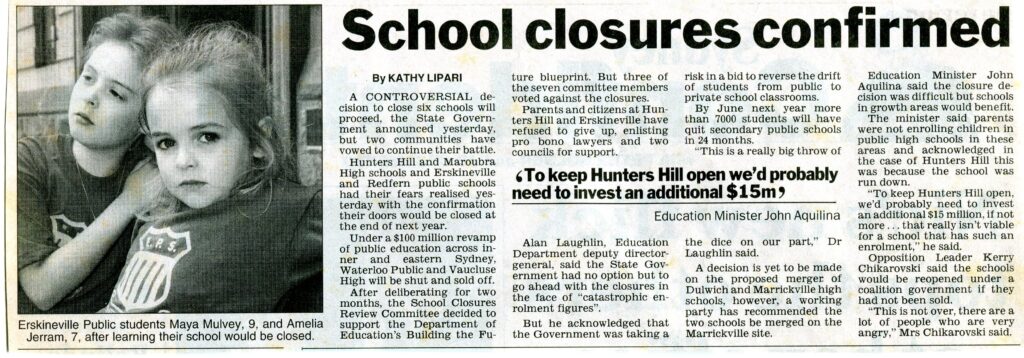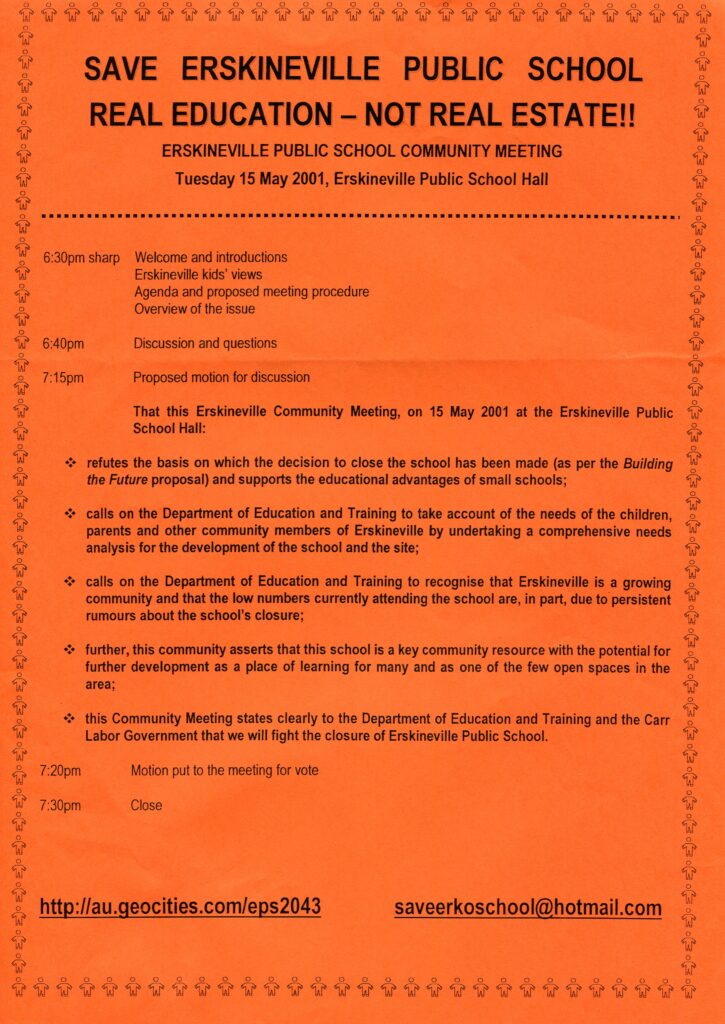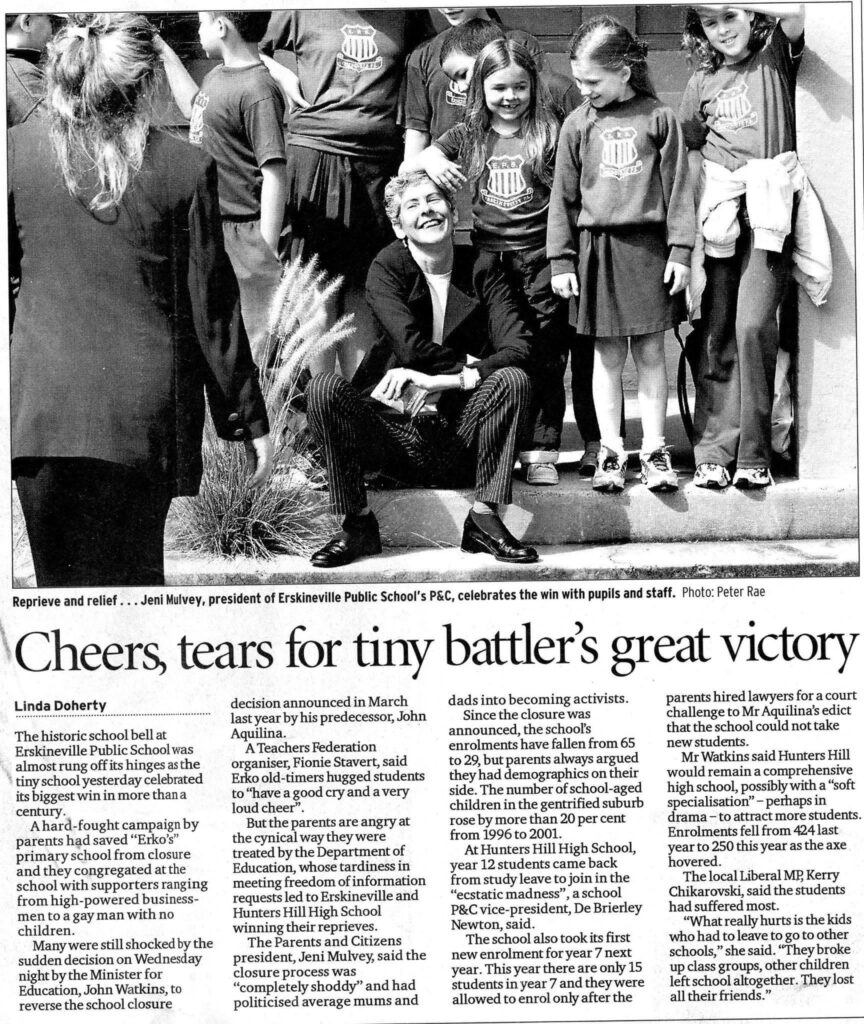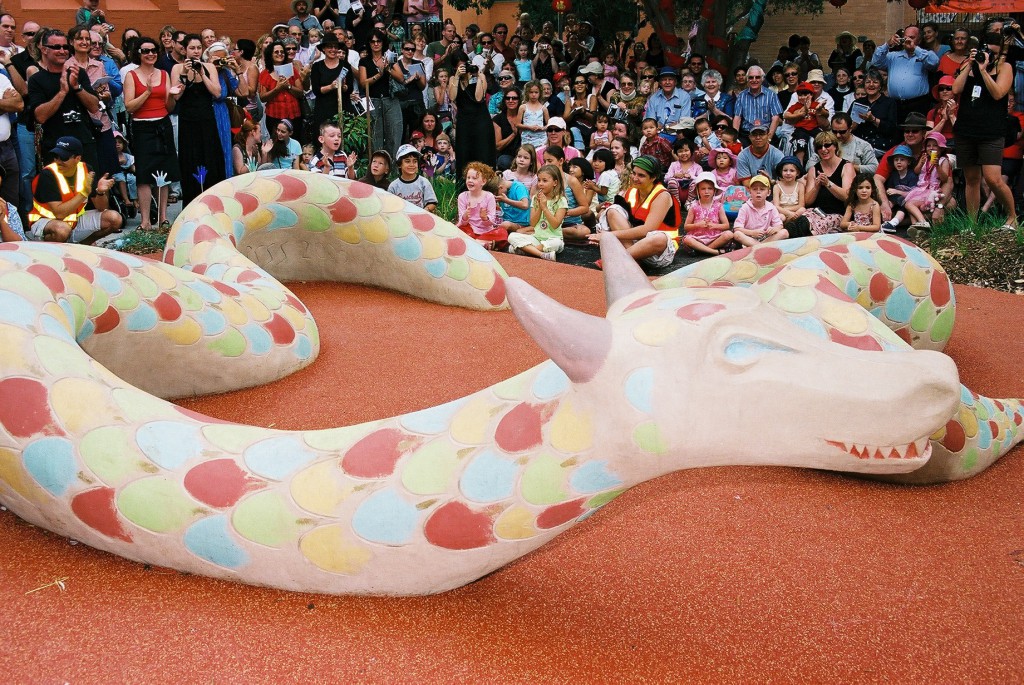For my HSTY3902 major project, the community organisation that I chose to work with was my old primary school, Erskineville Public School. Unfortunately, after writing to them, and then calling them, they said no to my proposal. However, with encouragement from the unit coordinator Sophie Deane Loy-wilson I was undeterred and decided to design and execute my own history project about the school. It was a massive undertaking, the likes of which I had never done before. I decided I wanted to create a multimedia presentation which would reflect on the attempted closure of the school from 2001-2002 and how the local community rallied together to save it. I had seen past student’s multimedia videos and found them to look professional and be quite engaging. I also thought that this would be the most efficient way to allow many people’s voices and stories to be heard.
After looking at the school website I also realised that there was no information about the school’s history presented there, and after talking to local community members I learnt that while there was an abundance of historical information and sources regarding the school, there were very few organised presentations.
With this project I hoped to portray what I felt was a very important part of both the school’s, Erskineville’s, and the local inner west’s history, as well as portray the importance of community to individuals. Next came the difficult part, I had to begin preparing interview questions, and seeking out local community members to interview. This is where my ‘insider’ position became really useful as I was able to get in touch with a wide variety of Erskineville Public schools community members. Included in this group were past students, past parents and P&C members/Presidents, past teachers and even a past ‘Erko’ Principal. I had planned to interview more people however some people were more difficult to arrange a time with. In the end it was probably for the best as I ended up with almost 4 hours’ worth of interview footage to use.
I also was given old interview footage (from local historian and ‘Erko’ parent Sean Macken) of a woman named Frances Cusack being interviewed about her involvement in managing to save the school which was very useful. These people all proved to be invaluable resources both in the personal stories and testimony they provided but also in many cases in the access to physical sources such as articles, letters, and photographs that they granted me. It took me hours and hours to sort through and scan the huge range of newspaper articles, reports, and letters that I was given. These primary sources have made up the majority of the visual aspects of my video, overlayed on the audio and video footage that I recorded.

There are a few central themes which I addressed through the video. The most obvious one being a strong sense of community and why that is important to people. Another theme is the process of government-driven gentrification and how a small community resisted such. This project also alludes to broader themes of public education and the importance many parents place in supporting local schools.

I am hoping this project will benefit the wider Erskineville community in that it documents and preserves an important part of Erskineville, and the wider inner-west’s history. It is also a history that is often forgotten or just not taught, so I hope that by presenting the history in an easily accessible form it will reach a wider audience and be more effective in its delivery.
One of the more challenging aspects of this project was the actual construction of the multimedia video. As a history student I have much more familiarly with writing essays and so it really challenged my skillset and creativity. However, I really flourished in being able to create something so out of the ordinary and being able to experiment with various audio and visual effects. The program I used was Adobe Premier Pro. This program is quite advanced and so it took me an entire day of just watching YouTube tutorials and experimenting with the various tools in order to create only 2 minutes of my video (which ended up being around 26 minutes in length). Luckily as the days bore on, I became more proficient in my skills and the process became faster.
I have also sent the video to all the people I interviewed. By doing this I wanted to ensure that they were happy and felt comfortable with the way I used their interview footage, as well as ensuring my project creates some form of impact. All the people I interviewed were really interested and passionate about the history of the school and its attempted closure and so I hope that they will forward it on to other interested parties. That way more people will learn about the fascinating history of Erskineville Public school and its importance to the local community.


